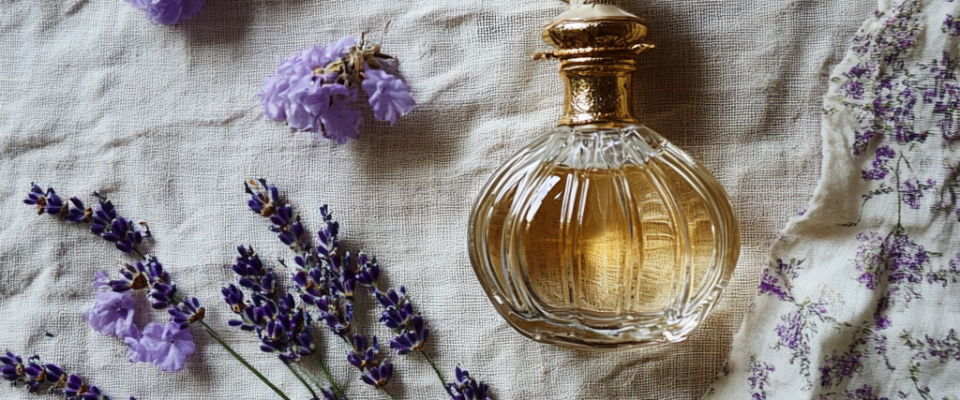The importance of aromatic plants and their application in modern life
Aromatic plants play a significant role in modern human life. They are used not only in perfumery and cosmetology, but also in cooking, medicine, aromatherapy and even in agriculture as natural repellents. The essential oils extracted from these plants are used to create fragrance compositions that can affect a person’s emotional and physical condition, lift their mood or, conversely, calm them down.
The importance of aromatic plants is also due to their contribution to the cultural heritage and traditions of various peoples of the world. For example, lavender, rosemary and mint have been used for centuries in ritual rituals, as well as as medicines. Nowadays, their potential continues to be studied in laboratories and research centers around the world, including in botanical gardens.
The historical role of botanical gardens in the study and cultivation of aromatic plants
The history of botanical gardens is closely connected with the research and cultivation of aromatic plants. Initially, these institutions were created to study medicinal and spicy plants, many of which had pronounced aromatic properties. Medieval monastery gardens and garden complexes of the Renaissance were filled with herbs and flowers used for the preparation of medicines, aromatic tinctures and incense.
The botanical gardens of that time served as a kind of research laboratories where scientists and herbalists experimented with new ways of growing and using aromatic plants. It was in these gardens that they first began to systematically study the properties of plants and their impact on human health, which laid the foundation for the development of such areas as phytotherapy and perfumery.
Modern methods of research and cultivation of aromatic plants in botanical gardens
Today, botanical gardens are advanced scientific centers where modern methods of research and cultivation of aromatic plants are used. With the help of genetic research, molecular biology and biotechnology, scientists can further study the chemical composition of essential oils and identify the most valuable components.
Thanks to modern technologies, botanical gardens are able to cultivate plants in conditions as close as possible to their natural habitat, as well as create new varieties that are more resistant to climate change and pests. Microclonal reproduction, hydroponics and aeroponics have become integral methods that allow the conservation and reproduction of rare species of aromatic plants. Experiments on cross-pollination and breeding in botanical gardens also contribute to the creation of hybrids with unique aromatic properties, which opens up new horizons for their use in various industries, including pharmaceuticals and perfumery.
The use of aromatic plants in perfumery and cosmetology
Perfumery and cosmetology are two key areas where aromatic plants play a central role. Botanical gardens provide an opportunity not only to study different types of plants, but also to develop new formulas to create unique flavors. Lavender, jasmine, rose, patchouli, vetiver and many other plants are the main sources of essential oils used in the production of perfumes and cosmetics.
Botanical gardens conduct research on the isolation and purification of essential oils, determining their properties and application possibilities. This allows you to create compositions that can not only delight with their fragrance, but also have a therapeutic effect, improving the emotional state of a person. Botanical gardens also cooperate with perfume houses and cosmetics brands, providing them with scientific data and plant materials to create new products. Such cooperation helps to introduce innovative production methods, improving the quality and environmental friendliness of the final products.
Contribution of botanical gardens to the conservation of rare and endangered aromatic species
One of the key tasks of the botanical gardens is the preservation of rare and endangered species of aromatic plants. Many of these plants are threatened with extinction due to climate change, destruction of natural habitats and over-harvesting in the wild. Botanical gardens play the role of “reserve banks” of genetic material, where plants are preserved and propagated under controlled conditions.
The creation and maintenance of ecosystems in botanical gardens allows not only to preserve rare species, but also to study their properties and adaptive mechanisms. This is especially important in the context of global climate change, when many plants may lose their natural habitats. The reproduction and introduction of such species into culture helps to preserve them for future generations and use them for scientific and commercial purposes.
Prospects for research of aromatic plants in botanical gardens in the context of climate change
Climate change presents significant challenges to the conservation and cultivation of aromatic plants. However, botanical gardens are actively adapting to these new conditions through various research initiatives. Their efforts focus on creating more resilient plant varieties that can thrive in drought, extreme temperatures, and fluctuating weather patterns. Key areas of development include:
- Genetic Breeding and Biotechnology: Modern botanical gardens are utilizing advanced methods to enhance the adaptability of plants, allowing for the creation of varieties that exhibit high resistance to negative environmental factors. This contributes to the conservation and sustainable use of aromatic plants.
- Increased Research and Innovation: The future role of botanical gardens will expand as they become central hubs for research and innovation related to aromatic plants, emphasizing sustainable development and biodiversity conservation.
- New Applications: Scientists and specialists will continue to explore innovative approaches in the study and utilization of aromatic plants, leading to new opportunities in fields such as perfumery and medicine.
Questions and Answers
Aromatic plants are used in various areas such as perfumery, cosmetology, cooking, medicine, aromatherapy, and agriculture as natural repellents. Their essential oils can affect emotional and physical well-being, influencing mood and relaxation.
Botanical gardens originated as centers for the study of medicinal and aromatic plants. They served as research laboratories where scientists experimented with the growth and uses of these plants, laying the groundwork for fields like phytotherapy and perfumery.
Today, botanical gardens utilize genetic research, molecular biology, biotechnology, microclonal reproduction, hydroponics, and aeroponics. These methods help in studying essential oils, creating resilient plant varieties, and conserving rare species.
Botanical gardens act as “reserve banks” for genetic material, preserving and propagating rare and endangered aromatic plants. They create controlled ecosystems for study and reproduction, helping to protect these species from extinction due to climate change and habitat destruction.
Botanical gardens are expected to play an increasingly important role in adapting to climate change by developing resilient plant varieties, serving as research and innovation hubs, and exploring new applications for aromatic plants in fields like perfumery and medicine.

